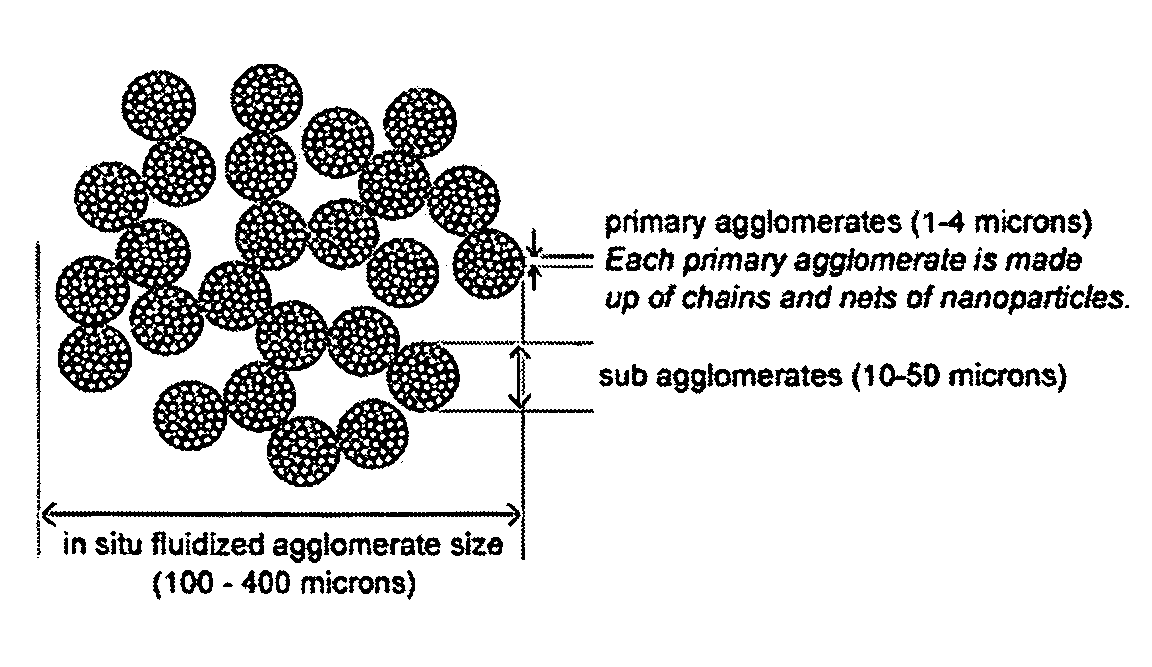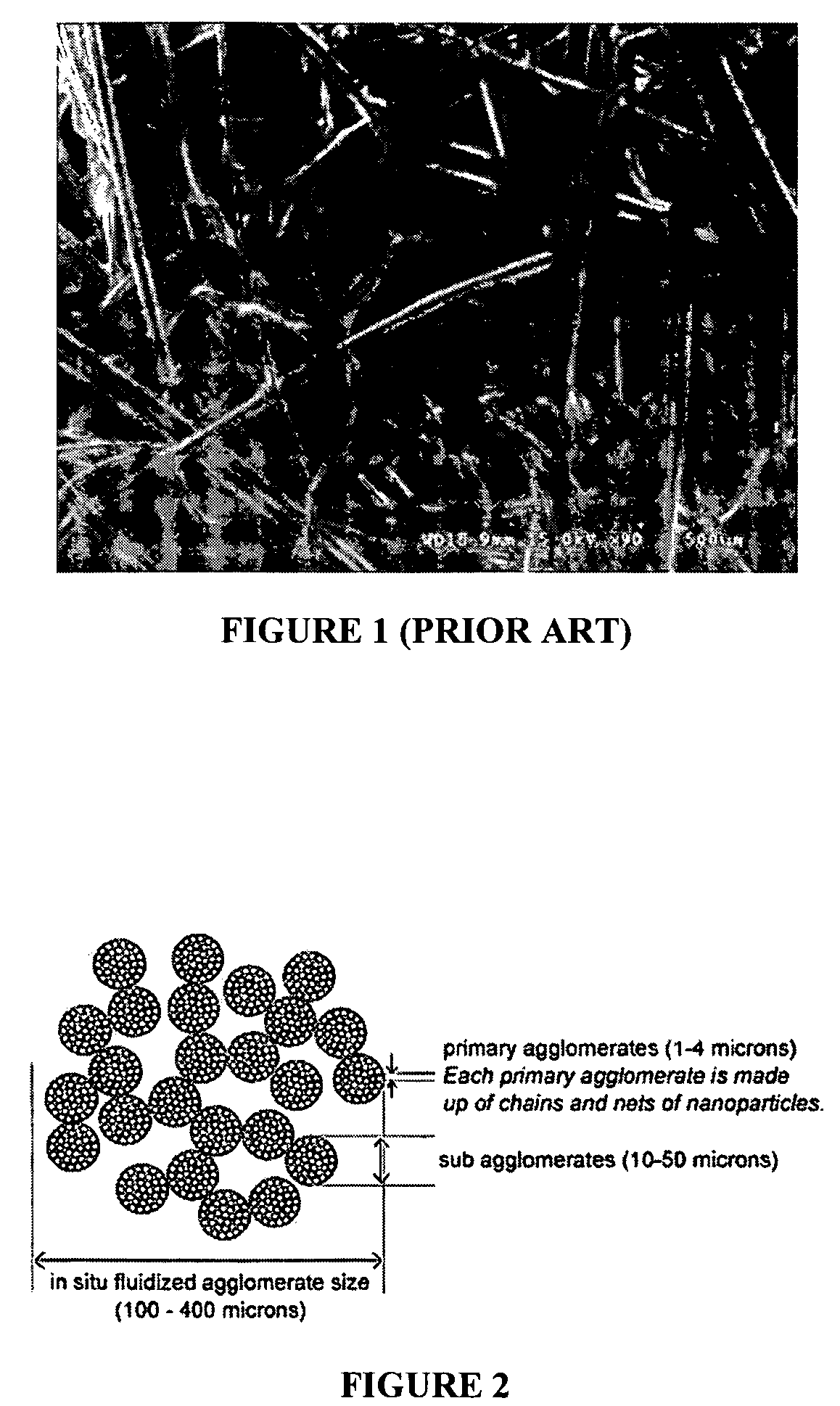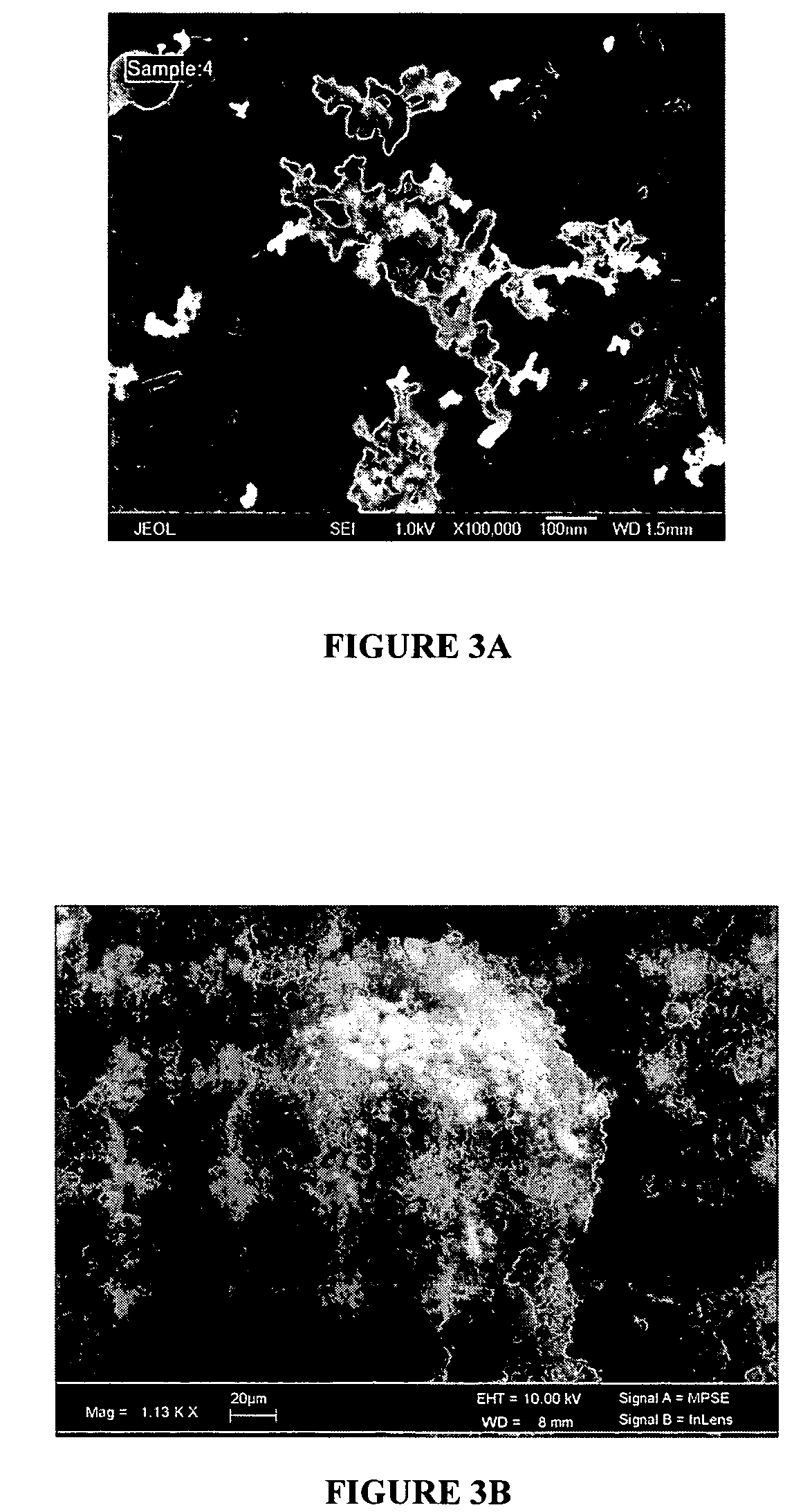Fractal structured nanoagglomerates as filter media
a nanoagglomerate and filter media technology, applied in the field of nanoparticle agglomerates, can solve the problems of low hydrodynamic resistance, low filter capacity, low penetration of mpps, etc., and achieve the effect of increasing the size of the agglomerate, reducing the resistance or pressure drop across the filter, and reducing the resistance or pressure drop
- Summary
- Abstract
- Description
- Claims
- Application Information
AI Technical Summary
Benefits of technology
Problems solved by technology
Method used
Image
Examples
example 1
[0057]Submicron SiC powder particles (average size 0.6 μm) were dispersed in air using a RODOS dry particle disperser (Sympatec, Inc). Hydrophobic fumed silica particles, specifically Aerosil R972 (Degussa), with a primary particle size of 16 nm and a specific surface area (BET) of 110 m2 / g were used as the filter media. Silica nanoagglomerates were sieved and consolidated by vibration to obtain sizes between 250 and 410 microns; these sizes were chosen so as to obtain a low penetration and also to keep the pressure drop across the filter media low.
[0058]The filter assembly consisted of a square acrylic plastic frame with a 3 cm thick cylindrical cavity, 4.45 cm in diameter. This frame was filled with the nanoagglomerate filter media. Two (2) fine mesh screens with apertures of 120 μm were positioned to capture / contain the filter media at the front and back of the frame. An aerosol stream was fed through the filter media contained within the frame. The number of particles in the aer...
example 2
[0065]Carbon Black Regal 660 A69 granules of sizes between 150 to 250 microns, provided by Cabot Corp., were customized as a packed bed. An acrylic plastic module of 2 inches in depth and with a cylindrical cavity of 1.75 inches in diameter was used as frame. Three layers of fabric of 69 microns held the granulated material at the top and at the bottom of the frame. The selection of the size of the granules was based on previous experiments conducted to determine optimum agglomerate sizes. The gas velocity across the filter was adjusted to 2.1 cm / s as calculated by the flow of gas measured with a digital flowmeter (FMA-1720, Omega) divided by the area of the filter. Pressure drop across the filter was measured as 79 mm of H2O using a differential pressure transmitter (68071-28, Cole-Parmer).
[0066]Similar to the test conditions of Example 1, SiC particles with an average size of 0.6 microns were dispersed in air using a RODOS to generate a solid aerosol. This aerosol was used to chal...
example 3
[0068]An alternative and improved experimental setup was assembled to measure collection efficiencies of customized filters according to further experimental evaluations of the disclosed filtration systems. The improved setup included: (i) an aerosol generation system composed of an atomizer for the generation of submicron size droplets, a drier for removal of the solvent that contained the solid / liquid particles, and a neutralizer for removal of electrostatic charges; (ii) a particle counter located upstream of the filters composed of a Diluter and a Condensation Particle Counter (CPC); (iii) a system for measuring particle size distributions composed of a Scanning Mobility Particle Sizer (SMPS); and (iv) instruments for measuring typical variables related to filtration, such as flow and pressure drop.
[0069]A schematic illustration of the improved experimental setup is provided in FIG. 9. The disclosed experimental setup is generally effective for use with a clean air source, and t...
PUM
| Property | Measurement | Unit |
|---|---|---|
| velocity | aaaaa | aaaaa |
| particle sizes | aaaaa | aaaaa |
| particle sizes | aaaaa | aaaaa |
Abstract
Description
Claims
Application Information
 Login to View More
Login to View More - R&D
- Intellectual Property
- Life Sciences
- Materials
- Tech Scout
- Unparalleled Data Quality
- Higher Quality Content
- 60% Fewer Hallucinations
Browse by: Latest US Patents, China's latest patents, Technical Efficacy Thesaurus, Application Domain, Technology Topic, Popular Technical Reports.
© 2025 PatSnap. All rights reserved.Legal|Privacy policy|Modern Slavery Act Transparency Statement|Sitemap|About US| Contact US: help@patsnap.com



